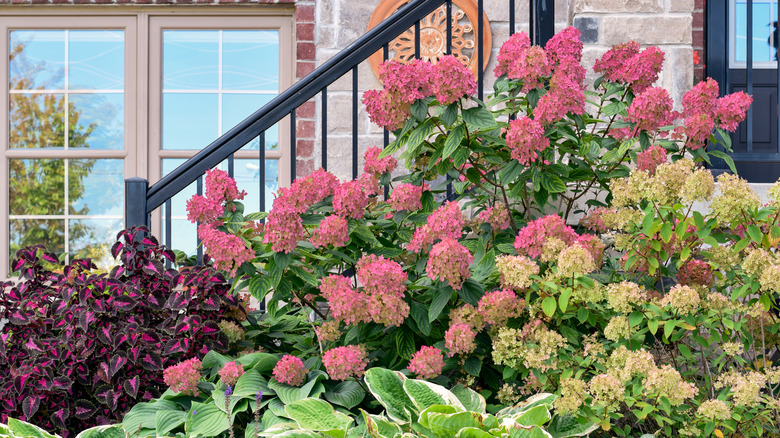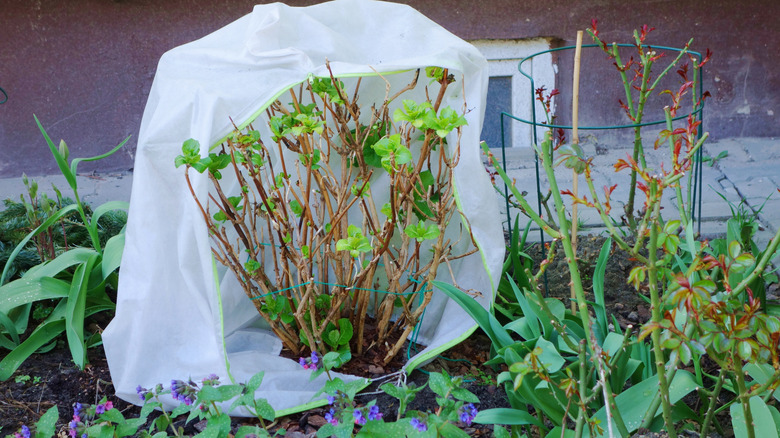Hydrangeas Need Special Care In Fall - Here's What To Do Now For Better Blooms
As colder fall weather settles in, give the hydrangea bushes in your yard a little extra TLC now to ensure they give you the best flowers next year. Your shrubs will need a protective blanket of mulch (and possibly a burlap cover) and you should clean up any suspicious leaves to help prevent disease. While hydrangeas tend to be cold-hardy plants, since most varieties thrive in USDA Plant Hardiness Zones 3 to 9, it still might be a good idea to help insulate the roots this winter with a decent layer of mulch at the base. For hydrangeas in Minnesota or colder states, wood chip mulch can help protect roots from the whiplash of freezing and thawing weather during increasingly unpredictable winter months.
If you tend to have cold spells followed by warm ones, then even cold-hardy perennials can fall prey to something called frost heaving. This happens when it gets very cold, then warm again, and the soil shrinks or grows from the swing in temperature. This basically lifts a plant's roots above ground, almost like toothpaste squeezed from a tube. With roots exposed to frigid winds or dry air, the plant can die. That's why a nice, warm layer of mulch can help keep roots below ground where they belong. If you do catch roots poking out above ground this winter, there are ways to repair frost heaving in the garden.
Other tips for caring for hydrangeas in the fall
If you have hydrangeas that aren't as winter-hardy, like mophead hydrangeas (Hydrangea macrophylla), you should cover them in burlap if you live in a hardiness zone lower than 6 to avoid further damage to the plant. Meanwhile, should you prune your hydrangeas in the fall? Only if you've got new wood hydrangeas. Old wood hydrangeas, like mountain or big-leaf hydrangea varieties, should never be cut in the fall. Otherwise, you risk reducing the number of flowers you get next year. If in doubt, just keep the pruning shears holstered. Over-pruning or pruning at the wrong time can lead to fewer flowers.
However, autumn may be the perfect time to attack fungal diseases on your hydrangeas. These woody perennials can be particularly susceptible to some kinds of fungal infections – like Cercospora leaf spot, a common condition that can lead to reddish spots on leaves. If you see this on fallen hydrangea leaves, gather them up and dispose of them to prevent the fungus from spreading.
Don't rely on winter to take out the disease, either. The cold won't kill fungal infections, and if you leave diseased leaves or branches, you might have a worse case come spring. Nip problems in the bud in the fall. Most kinds of fungal infections likely won't kill your hydrangea, but they can reduce the number of blooms it grows each year. So if you want beautiful summertime flowers, start with these fall tasks now.

